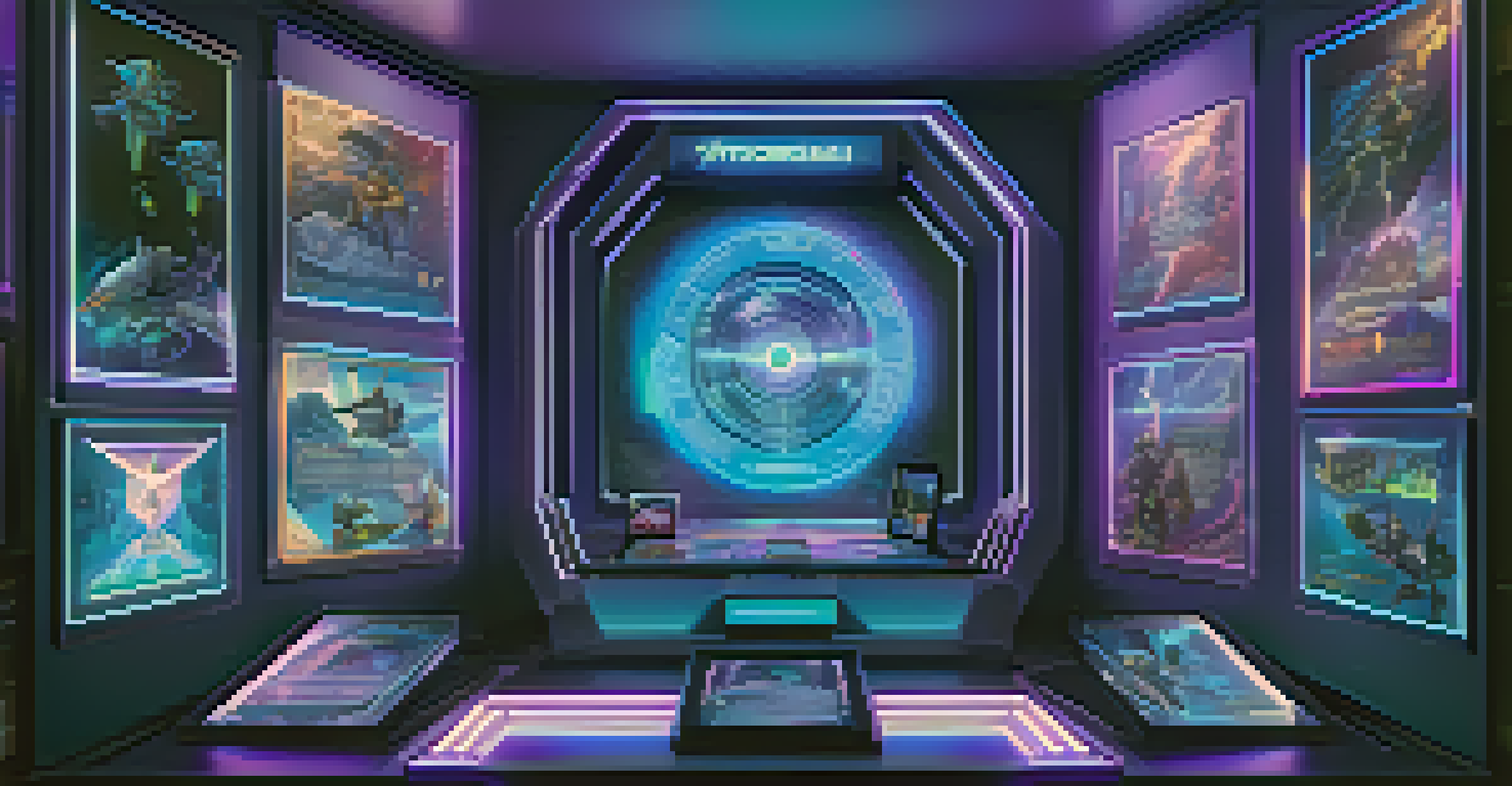NFTs: Redefining Ownership and Value in Digital Art

Understanding NFTs: The Basics Explained Simply
NFTs, or non-fungible tokens, are unique digital assets that represent ownership of a specific item or piece of content, often art. Unlike cryptocurrencies like Bitcoin, which are interchangeable, NFTs are one-of-a-kind, making them ideal for representing digital art. This uniqueness is secured on a blockchain, a decentralized ledger that ensures authenticity and provenance.
The future is already here — it's just not very evenly distributed.
Imagine you have a rare trading card—there's only one like it in the world, right? That’s what an NFT does for digital art; it certifies that you own the original version. This has opened up new avenues for artists to monetize their work without the risk of it being copied endlessly.
By providing this proof of ownership, NFTs not only empower artists but also allow collectors to invest in digital art as they would with physical pieces. As we dive deeper, we’ll see how this shift is reshaping the art world.
The Evolution of Digital Art and Ownership
Traditionally, digital art could be easily duplicated, making it challenging to establish true ownership. With the rise of NFTs, artists can finally sell their work with the assurance that buyers are purchasing something unique. This shift has fundamentally transformed the way we perceive digital art, elevating its status in the art community.

Think of it this way: owning an original painting from a famous artist has always held value due to its scarcity. NFTs bring this concept to the digital realm, creating a similar sense of exclusivity around digital creations. Now, artists can create limited editions of their work, each tied to a specific NFT, thereby enhancing its value.
NFTs Revolutionize Digital Ownership
NFTs provide a unique way to establish ownership of digital art, allowing artists to sell their work with verified authenticity.
This evolution not only benefits artists but also engages collectors in new ways, as they can now own a verified piece of digital art that holds its own value—just like traditional art forms.
How NFTs Create New Revenue Streams for Artists
NFTs provide artists with innovative ways to monetize their work beyond traditional sales. For instance, artists can earn royalties every time their NFT is resold, ensuring they benefit from the increasing value of their creations over time. This ongoing revenue model was nearly impossible in the traditional art market.
Art is not freedom from discipline, but disciplined freedom.
Picture a musician who releases a song as an NFT; every time that song changes hands, they receive a percentage of the sale. This creates a continuous connection between the artist and their work, fostering a community around their creations. It’s a game-changer for artists who often struggle with one-time sales.
Moreover, artists can engage directly with their audience, building relationships and communities that go beyond the artwork itself. This shift not only empowers creators but also enriches the overall art experience for collectors.
The Role of Blockchain in Securing Digital Ownership
Blockchain technology is at the heart of NFTs, providing the security and transparency necessary for establishing ownership of digital assets. Each NFT is recorded on a blockchain, which serves as an immutable ledger, meaning once an NFT is created, its history cannot be altered. This technology gives buyers confidence that they are investing in genuine art.
Consider it like a digital certificate of authenticity that cannot be forged. When you purchase an NFT, the transaction is recorded, ensuring you can always prove ownership. This level of transparency is a significant departure from traditional art sales, where provenance can often be murky.
New Revenue Streams for Artists
Through NFTs, artists can earn royalties on resales, creating ongoing revenue opportunities that traditional art sales do not offer.
By harnessing blockchain, NFTs provide a robust framework for ownership that is traceable, secure, and verifiable, making digital art more appealing to collectors and investors alike.
Challenges and Criticisms of the NFT Market
Despite the excitement surrounding NFTs, the market is not without challenges and criticisms. One major concern is the environmental impact of blockchain technology, particularly proof-of-work systems that require significant energy to operate. As awareness of climate change grows, many are questioning the sustainability of NFTs.
Additionally, the market has faced issues with copyright infringement, as some artists have found their work tokenized and sold without permission. This has raised questions about the protection of intellectual property in the digital space, highlighting the need for clearer regulations.
Navigating these challenges is crucial for the long-term viability of NFTs. While the benefits are substantial, addressing these concerns will shape the future landscape of digital ownership.
NFTs and the Future of Digital Collectibles
As the concept of ownership evolves, NFTs are paving the way for new forms of digital collectibles. From virtual trading cards to unique in-game items, the possibilities are endless. This trend is gaining traction, particularly among younger generations who are more comfortable with digital interactions.
Imagine owning a digital collectible that not only has aesthetic value but also offers utility within a game or virtual world. This fusion of art and functionality is reshaping how we think about value in the digital age. Collectors can now engage with their assets in ways that were previously unimaginable.
Blockchain Ensures Secure Transactions
Blockchain technology underpins NFTs, providing a secure and transparent ledger for tracking ownership and provenance of digital assets.
The future of digital collectibles looks bright, with NFTs leading the charge. As technology continues to advance, we can expect even more innovative uses for NFTs, further blurring the lines between art, ownership, and community.
Conclusion: NFTs as a Catalyst for Change
In conclusion, NFTs are not just a trend; they are a catalyst for profound change in how we understand ownership and value in digital art. By leveraging blockchain technology, they provide artists with new revenue streams and collectors with verified ownership. This transformation is democratizing the art world, making it more accessible and equitable.
While challenges remain, the potential for NFTs to redefine the art market is immense. As artists and collectors embrace this new paradigm, we can expect to see a flourishing ecosystem where creativity and technology intersect.

Ultimately, NFTs invite us to reconsider what it means to own art in the digital age, opening doors to new possibilities that celebrate creativity in all its forms.